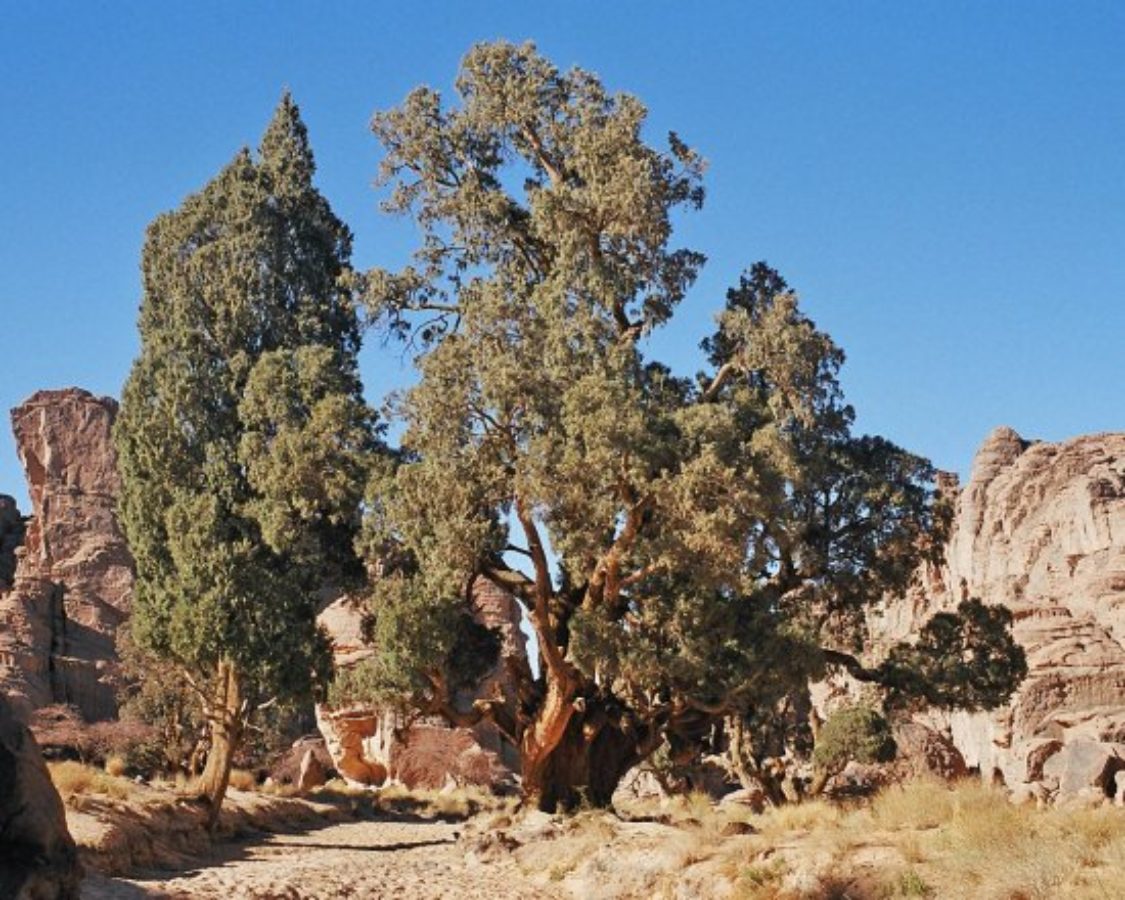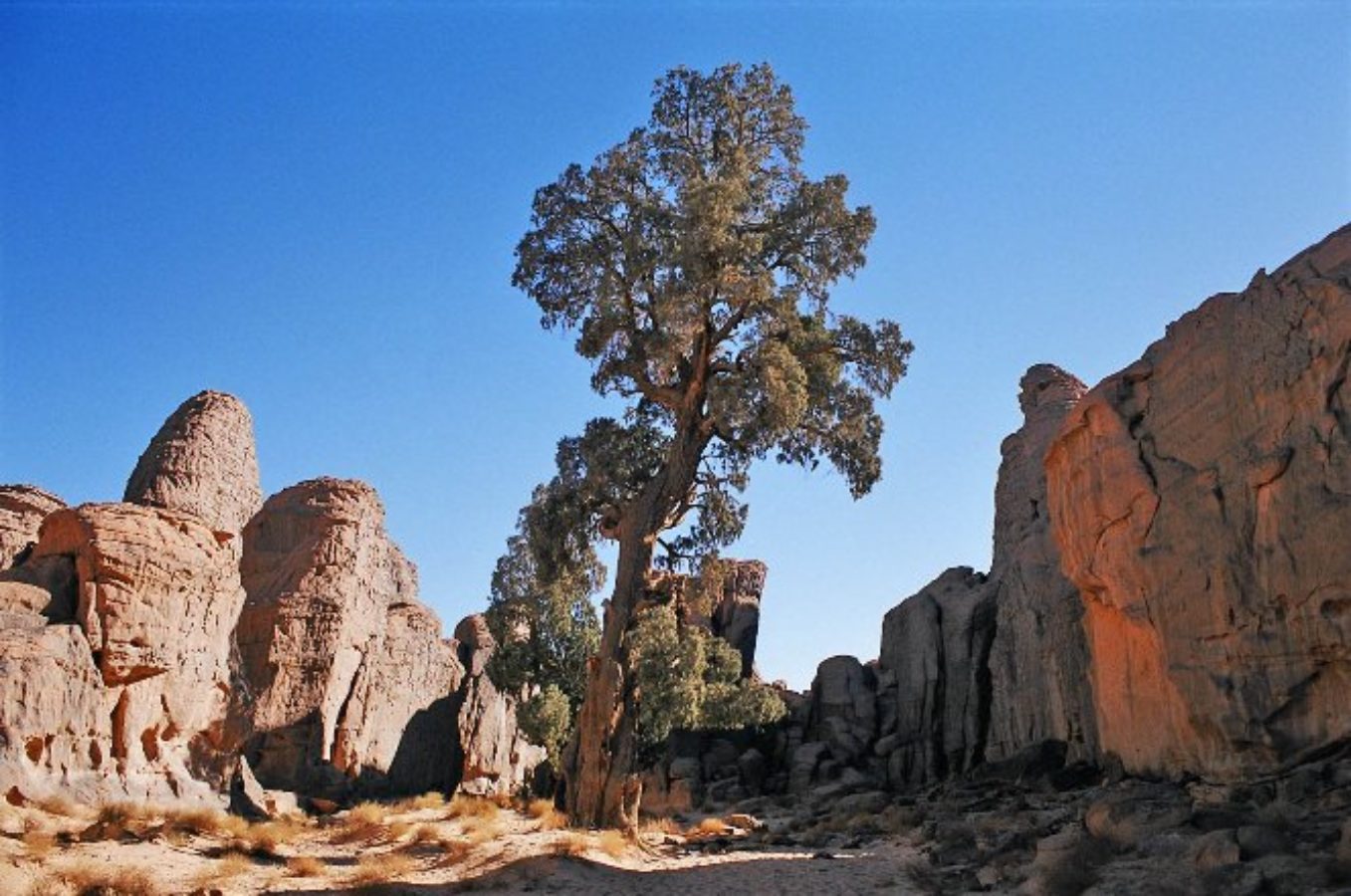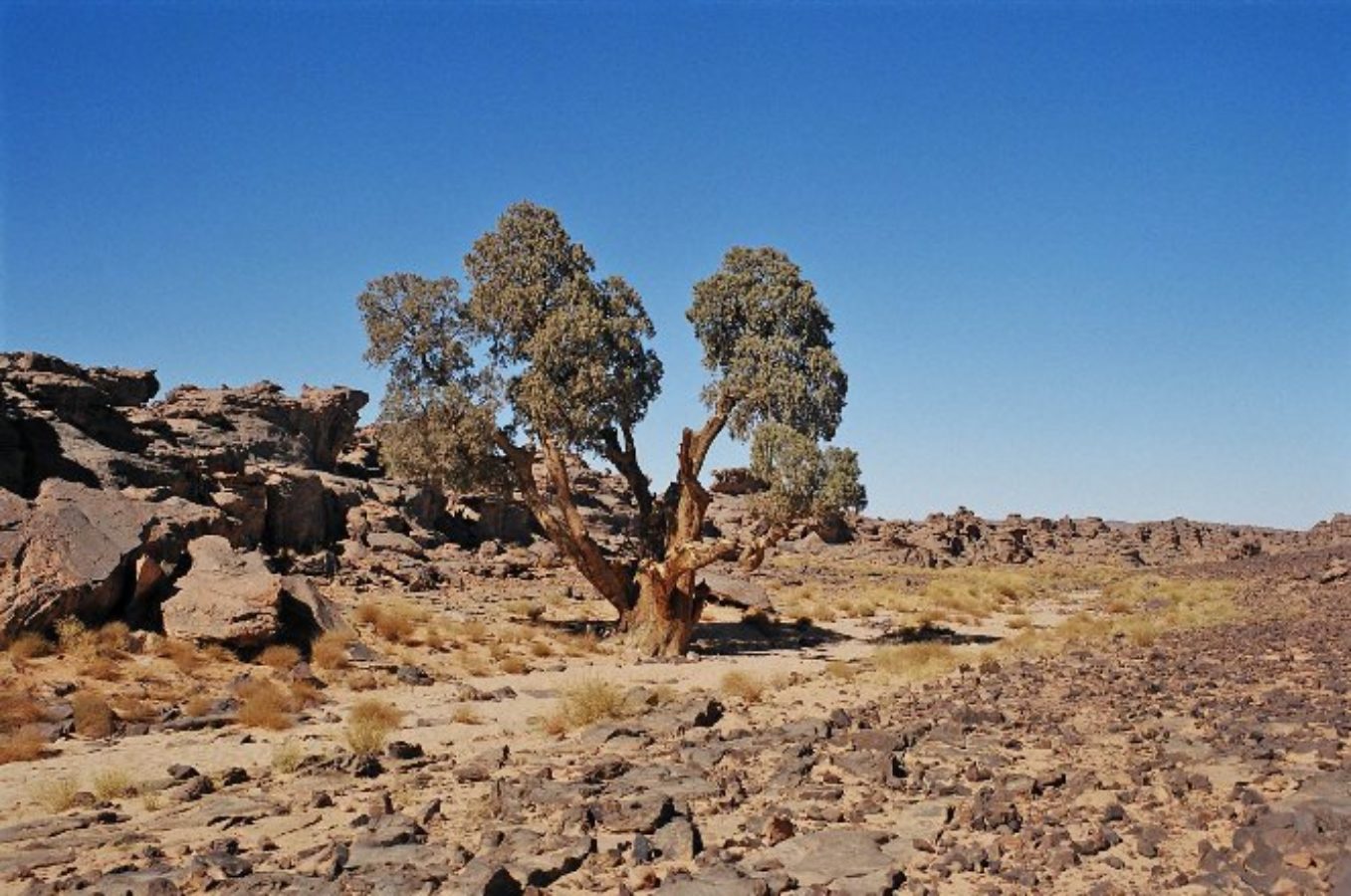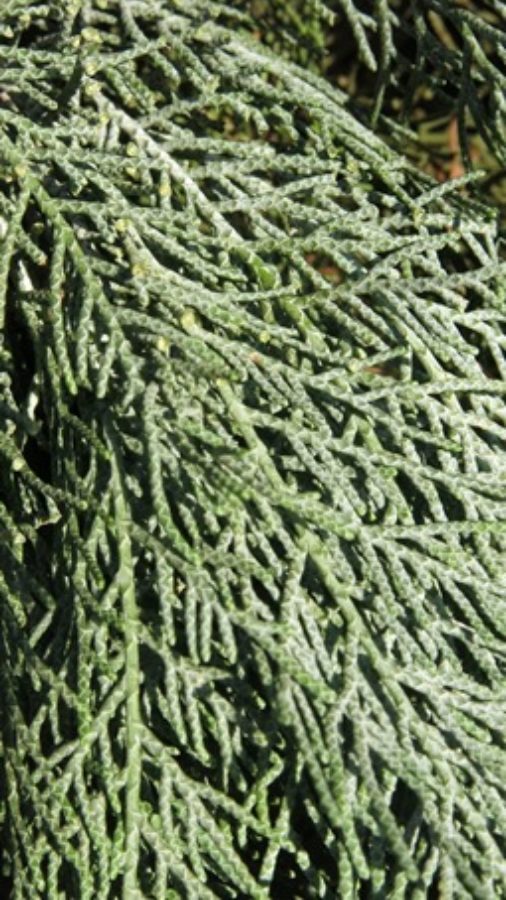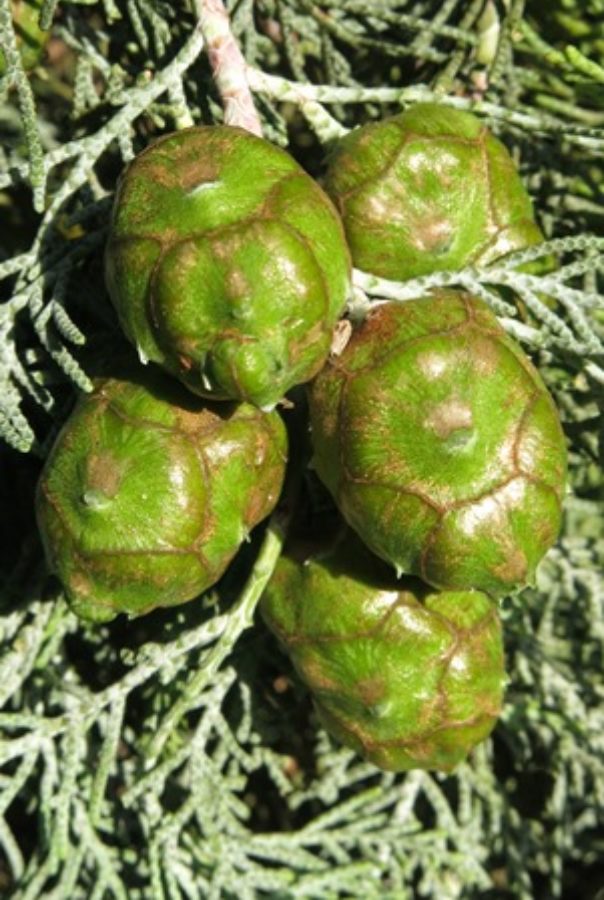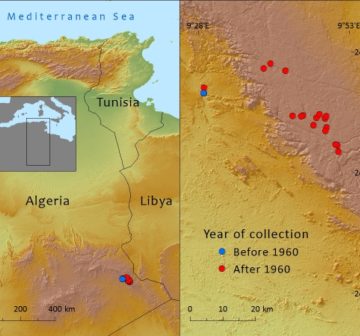Cupressaceae
Cupressus dupreziana var. dupreziana
Native to the Sahara Desert in Algeria where it occupies a narrow strip of about 120km long on the edge of Tassili Plateau. It is Critically Endangered due to grazing and cutting for firewood
Description
Habit
Tree 16–18m tall, monoecious; trunk d.b.h. 2–3m. Bark thick, deeply fissured, exfoliating in longitudinal strips. Branches spreading or ascending, forming a conical or pyramidal crown.
Foliage
Spreading or drooping to pendulous. Leaves, scale-like (all equal in size), arranged in opposite pairs at right angles to those above or below, overlapping, gradually tapering, with glands, stomata few and scattered on margins near leaf base; shiny greyish-green or glaucous green.
Cones
Male pollen-cones on branches close to female seed-cones, solitary, terminal, ovoid, 4–6 x 2–3mm, yellowish-brown when mature. Female seed-cones solitary on lateral branches, terminal on short leafy branchlets, ovoid-oblong, 15–27 x 13–21mm, light brown when mature; bract-scale complexes ca12 in opposite pairs at right angles to those above or below. Seeds 6–8mm, closely packed, ovoid-globose, flattened, dark brown, wings 2 on opposite sides, 1–2mm wide.
Notes
This variety and C. dupreziana var. atlantica have in the past been recognised as distinct species: C. dupreziana A. Camus and C. atlantica Gaussen. The differences between these are very small in that C. dupreziana var. atlantica differs by having globose to ovoid-globose seed cones with 10–12 bract-scale complexes and the seeds are more or less angular.
Human Uses
The wood was highly valued for construction and carpentry in the past. The main use now is for fuel.
References and further reading
- Abdoun, F. (1999). La population de cyprès du Tassili en voie de disparition. Symbiose. 7: 23-29.
- Abdoun, F. (2002). Etude de la dynamique spatio-temporelle des populations de Cupressus dupreziana A. Camus au Tassili n’Ajjer, Algérie. Thèse Doc., Université d’Aix-Marseille III, 171 pp.
- Abdoun, F. (2006). Analyse rétrospective des projets de protection et de réintroduction du cyprès du Tassili dans son aire naturelle et dans le monde, Journées Internationales sur la Désertification et le Développement Durable, Biskra.
- Abdoun, F. & Beddiaf, M.(2002). Cupressus dupreziana A. Camus, répartition, dépérissement et régénération au Tassili n’Ajjer, Sahara Central. Comptes Rendus Biologie. 325: 617-627.
- Abdoun, F., Jull, A. J. T., Guibal, F. & Thinon, M.(2005). Radial growth of the Sahara’s oldest trees : Cupressus dupreziana A. Camus. Trees. 19: 661–670.
- Abdoun, F. & Gardner, M. (2013). Cupressus dupreziana var. dupreziana. In: IUCN 2013. IUCN Red List of Threatened Species. Version 2013.1. <www.iucnredlist.org>. Downloaded on 05 July 2013.
- Balachowsky, A.S. (1955). Une relique rarissime du Sahara Central : le cyprès de Duprez, La Nature. 3237: 20-24.
- Barry, J.P., Belin, B, Celles, J.C., Dubost, D., Faurel, L. & Hethener, P. (1970). Essai de monographie du Cupressus dupreziana A. Camus cyprès end´emique du Tassili des Ajjer (Sahara Central). Bull. Soc. Hist. Nat. Afrique Nord .61(112):95–178
- Benhouhou, S. Boucheneb, N., Sahli, F.& Idrissa Yaou, A. (2005). Le cyprès du Tassili : caractérisation floristique et écologique = Floristic and ecological characterisation of the Tassili cypress. Sécheresse. 16(1) : 61-66.
- Camus, A. (1958). Sur un Cupressus relique de la Forêt du Tassili. J. Agric. Trop. Bot. Appl. 5:766-7.
- Capot-Rey, R. (1954). Une crue de l'O. Edjréou, Trav. Inst. Rech. Sahar. 11: 111-116.
- Dubief, J. (1963). Le climat du Sahara. Trav. Inst. Rech. Sahar, h.s. II:275.
- Lavauden, L. (1926). Sur la présence d’un cypr`es dans les montagnes du Tassili des Azdjers. Comptes. Rendus. Acad. Sci .182:541–543
- Leredde, C. (1957). Etude écologique et phytogéographique du Tassili n’Ajjer. Trav. Inst. Rech. Sahar. II:455
- Pichot, C., Fady, B., & Hochu, I. (2000). Lack of mother tree alleles in zymograms of Cupressus dupreziana A. Camus embryos. Ann. For. Sci. 57: 17–22
- Pichot, C., El Maátaoui, M., Raddi, S. & Raddi, P. (2001). Surrogate mother for endangered Cupressus. Nature. 412: 39.
- Stewart, P. (1969). Cupressus dupreziana, threatened conifer of the Sahara. Biol. Conserv. 2(1):10–12.
